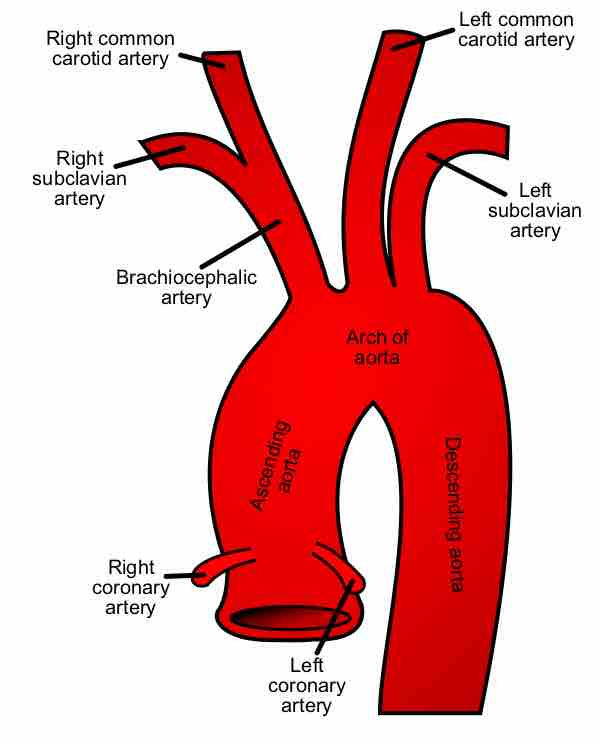The arch of the aorta, or the transverse aortic arch, is continuous with the upper border of the ascending aorta and begins at the level of the upper border of the second sternocostal articulation of the right side. The arch of the aorta runs at first upward, backward, and to the left in front of the trachea; it is then directed backward on the left side of the trachea and finally passes downward on the left side of the body of the fourth thoracic vertebra. At the lower border, this vertebra becomes continuous with the descending aorta.
Three vessels come out of the aortic arch: the brachiocephalic artery, the left common carotid artery, and the left subclavian artery. These vessels supply blood to the head, neck, thorax and upper limbs. In approximately 20% of individuals, the left common carotid artery arises from the brachiocephalic artery rather than the aortic arch, and in approximately 7% of individuals the left subclavian artery also arises here.

Aortic arch
This diagram shows the arch of the aorta and its branches.